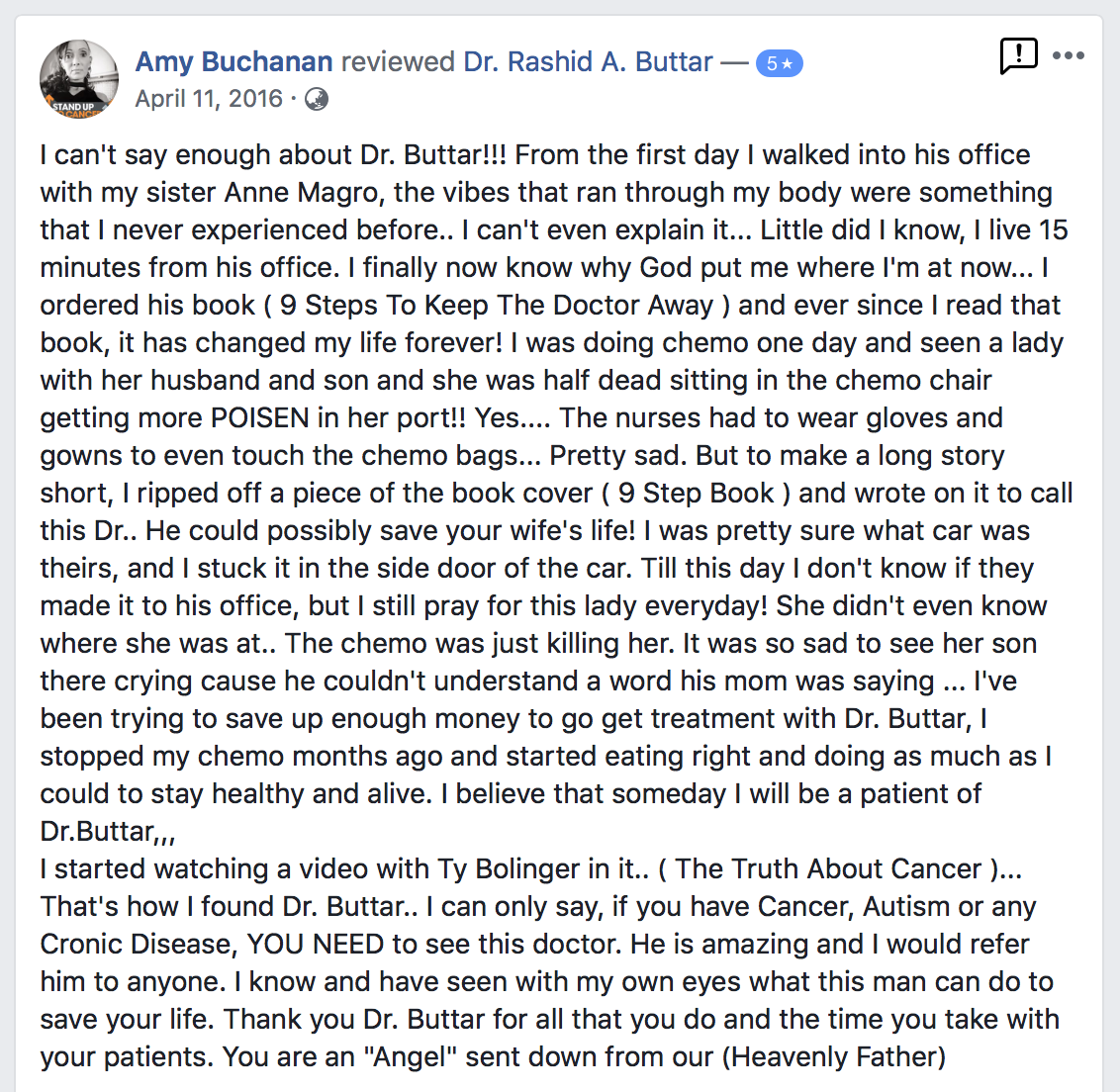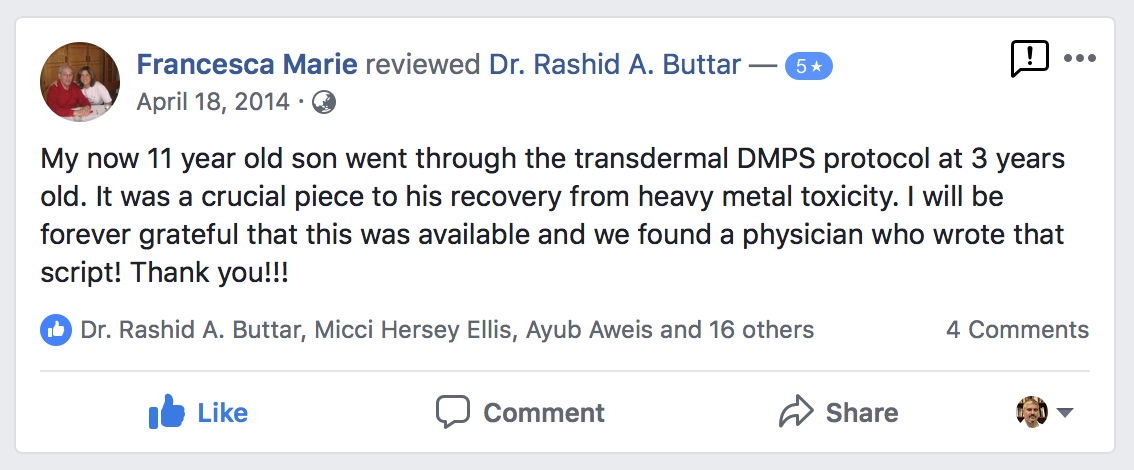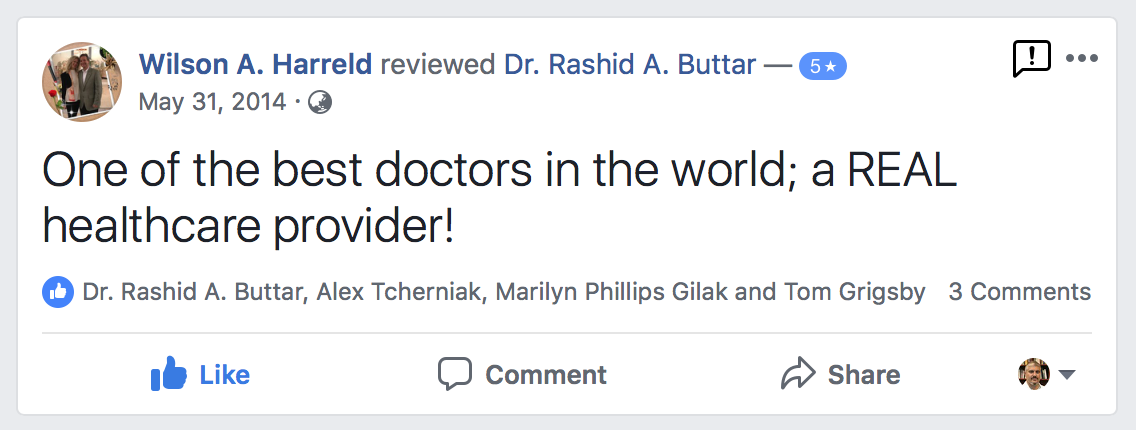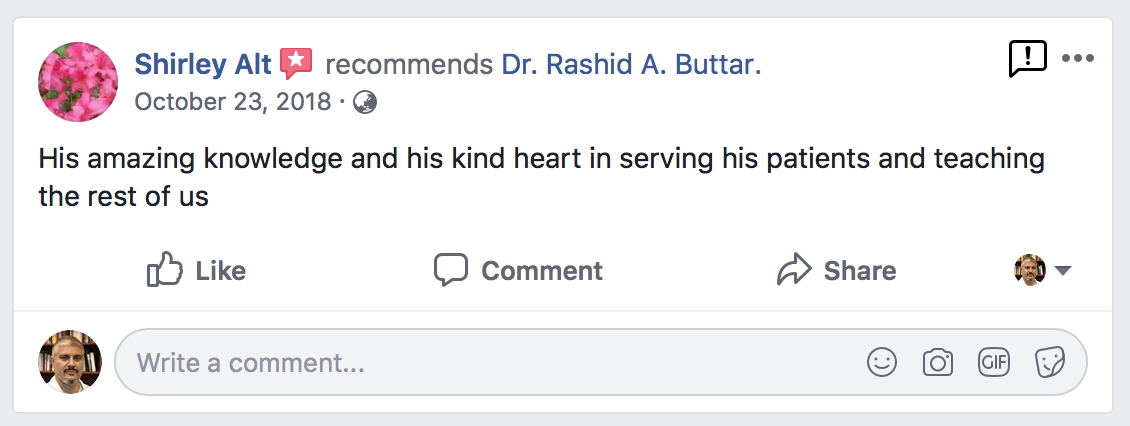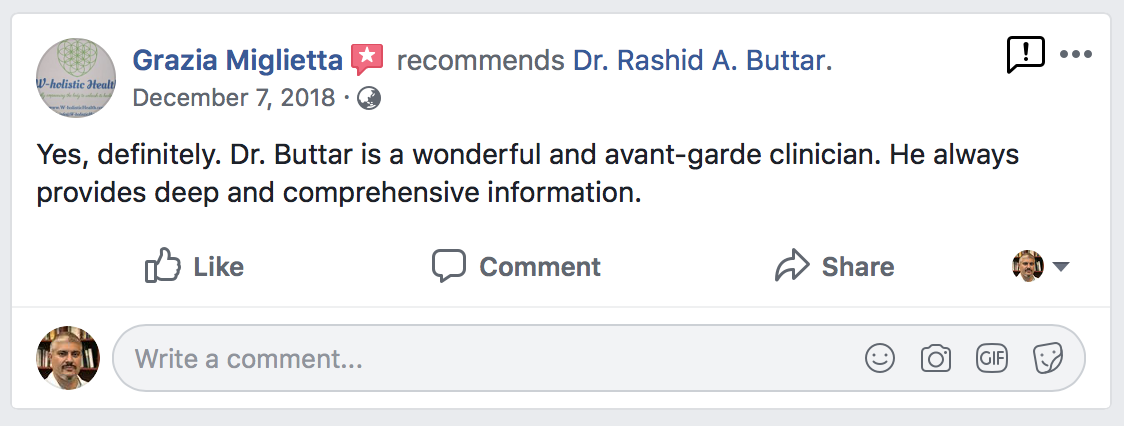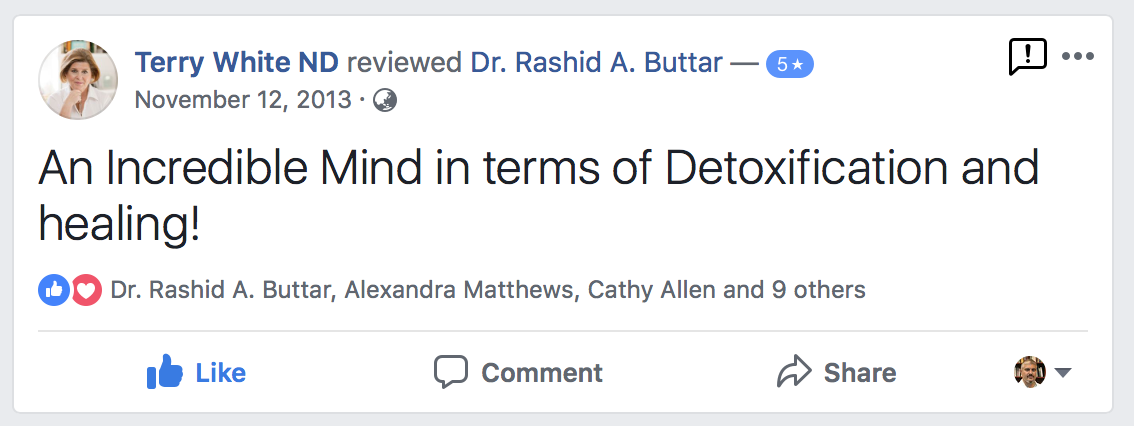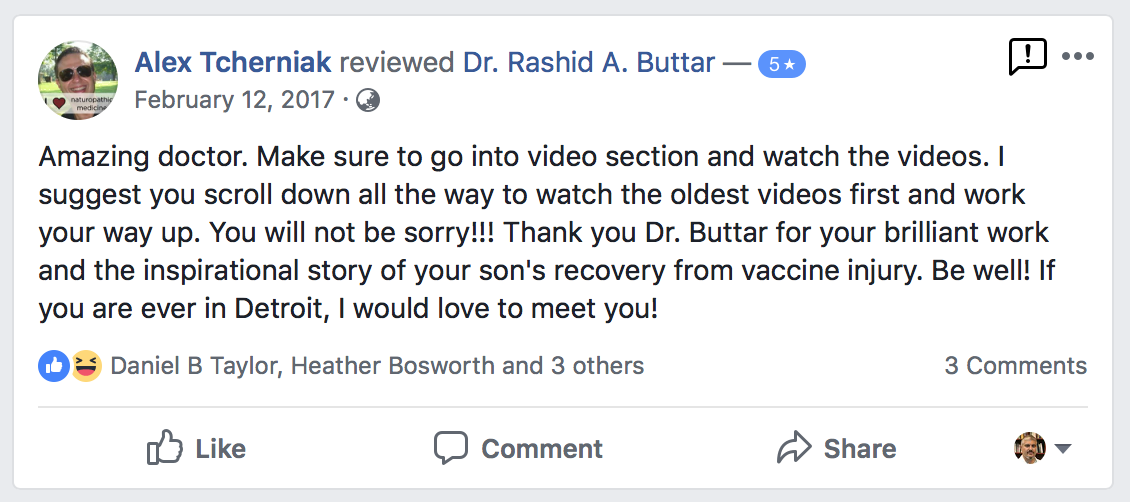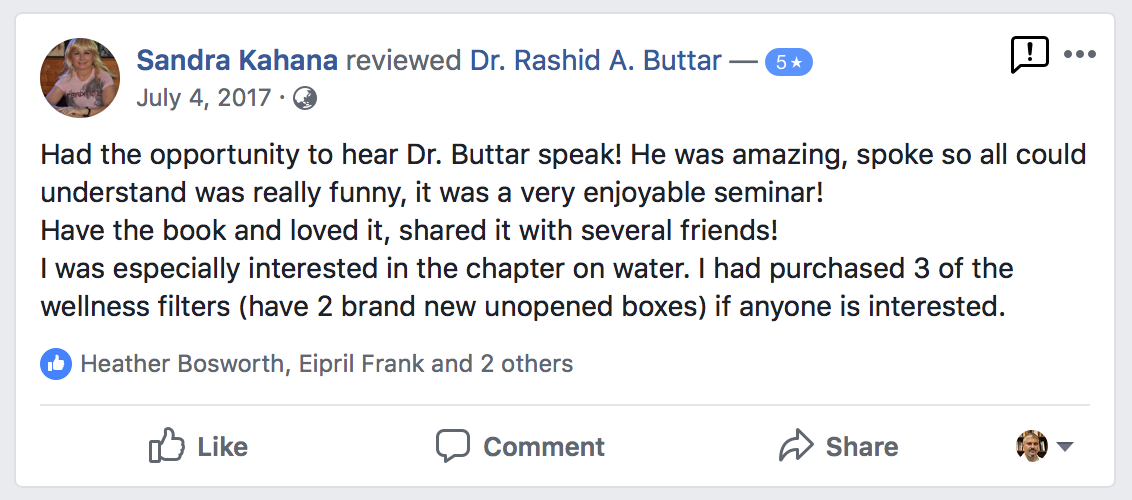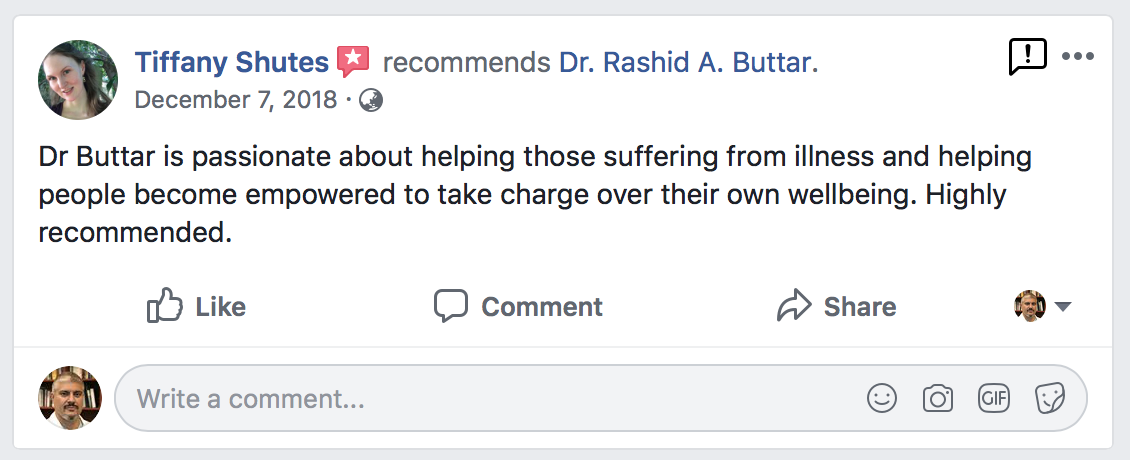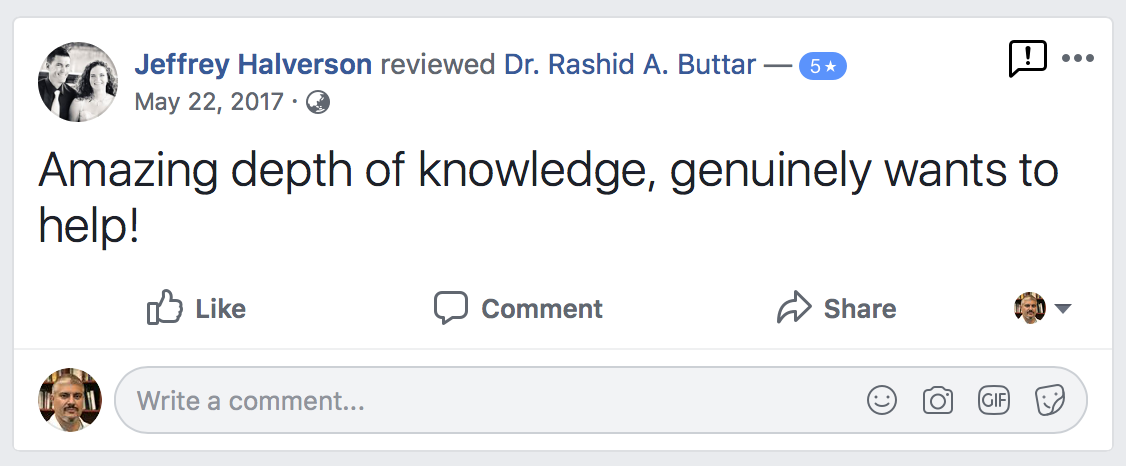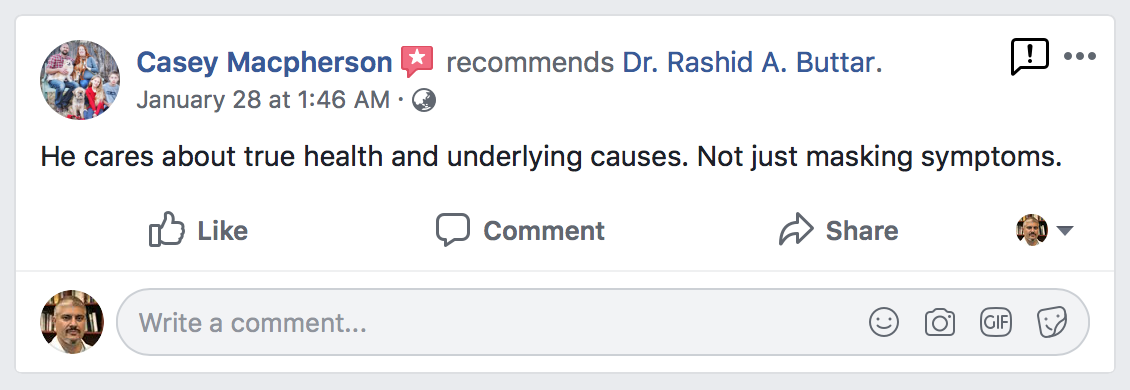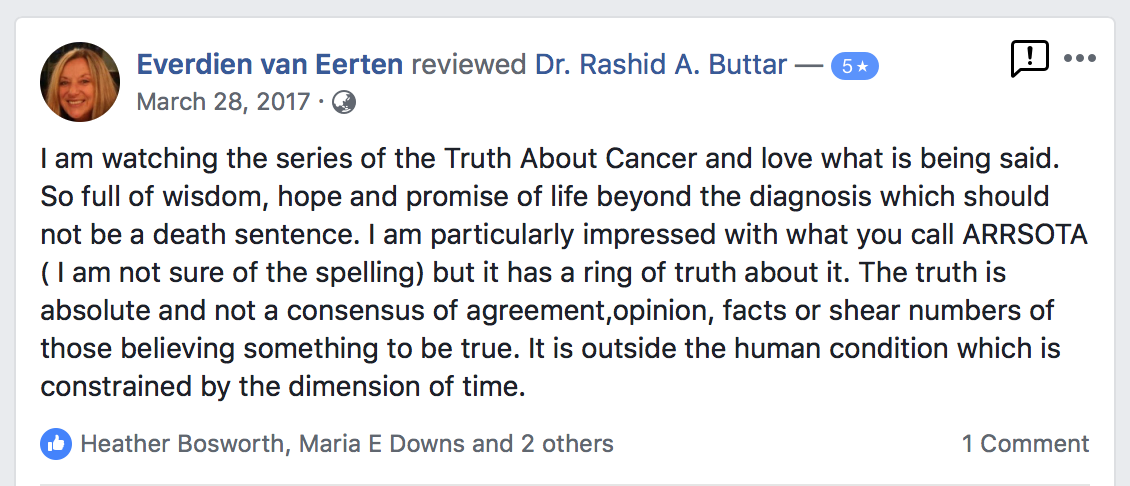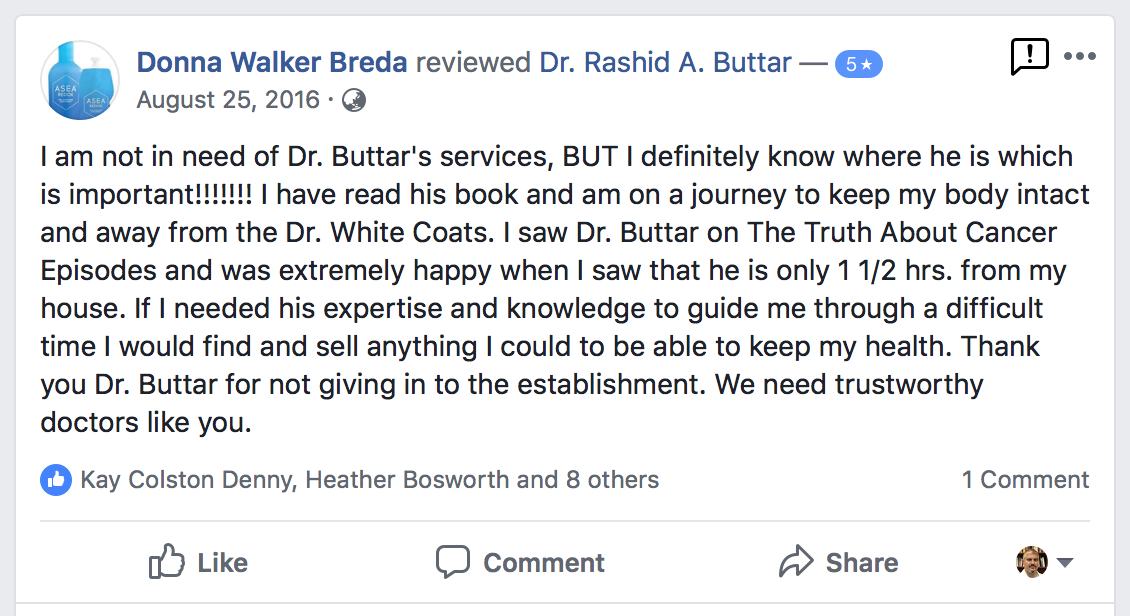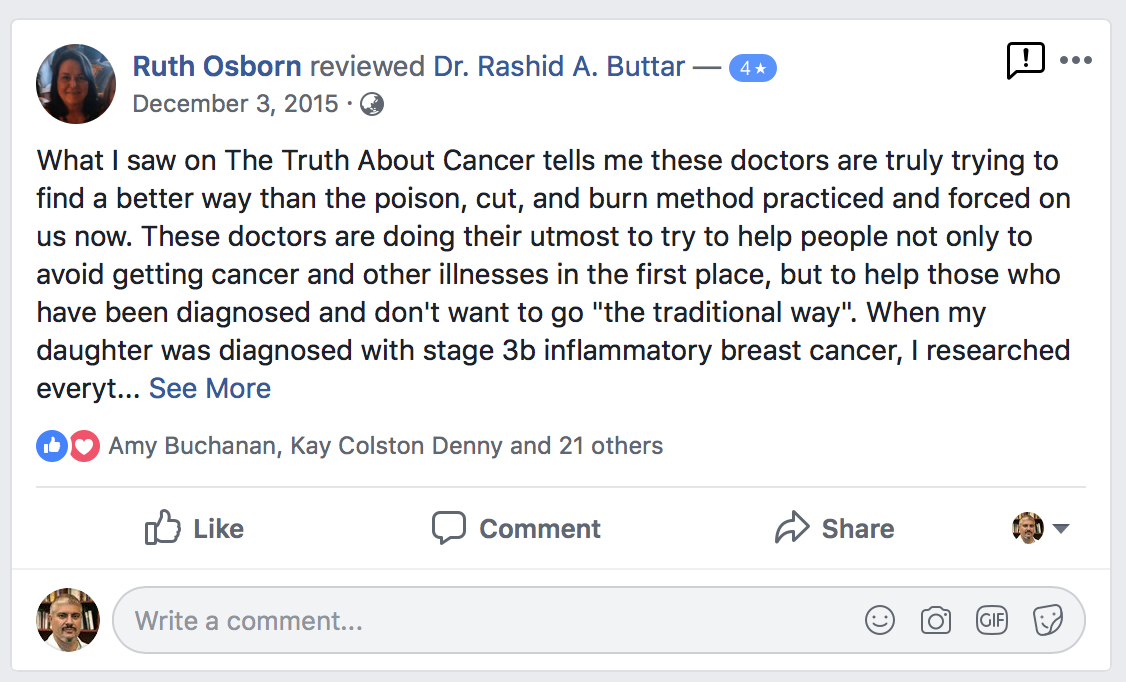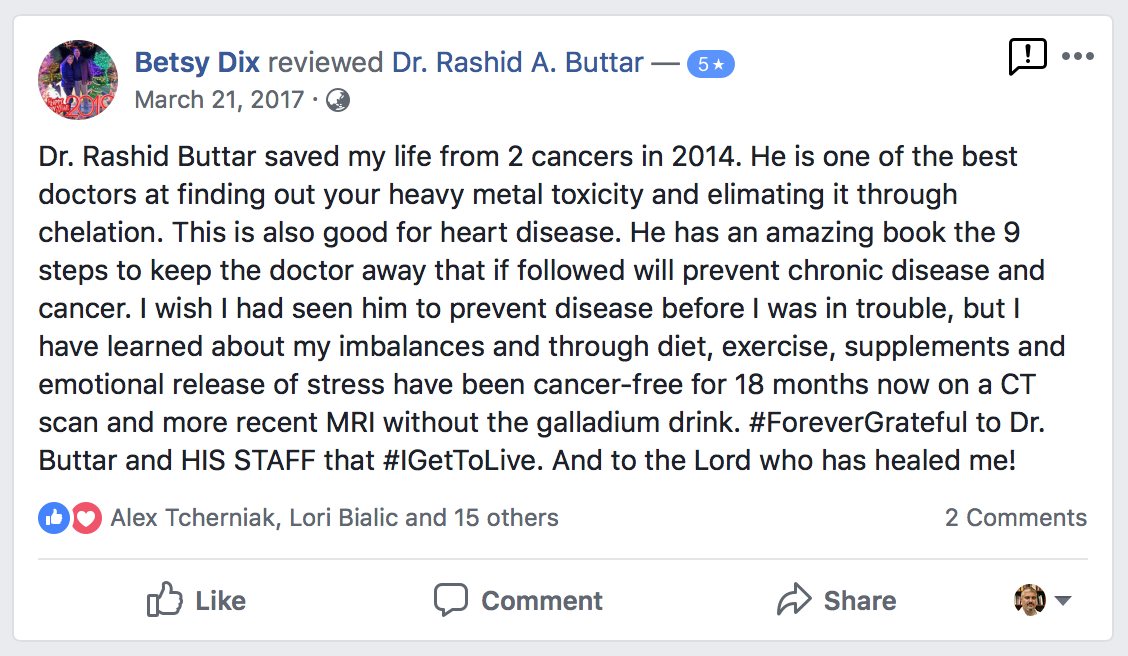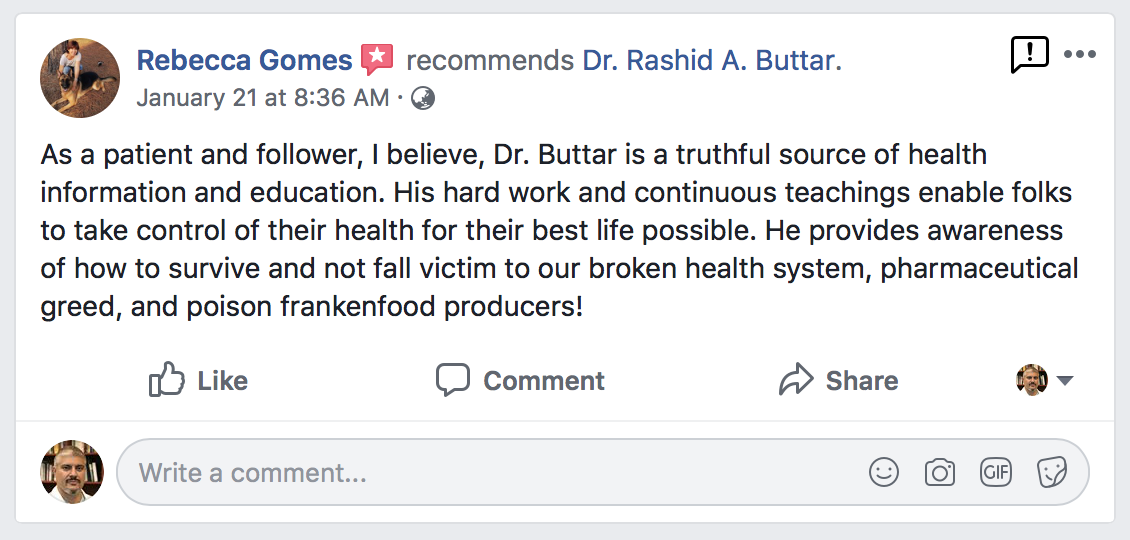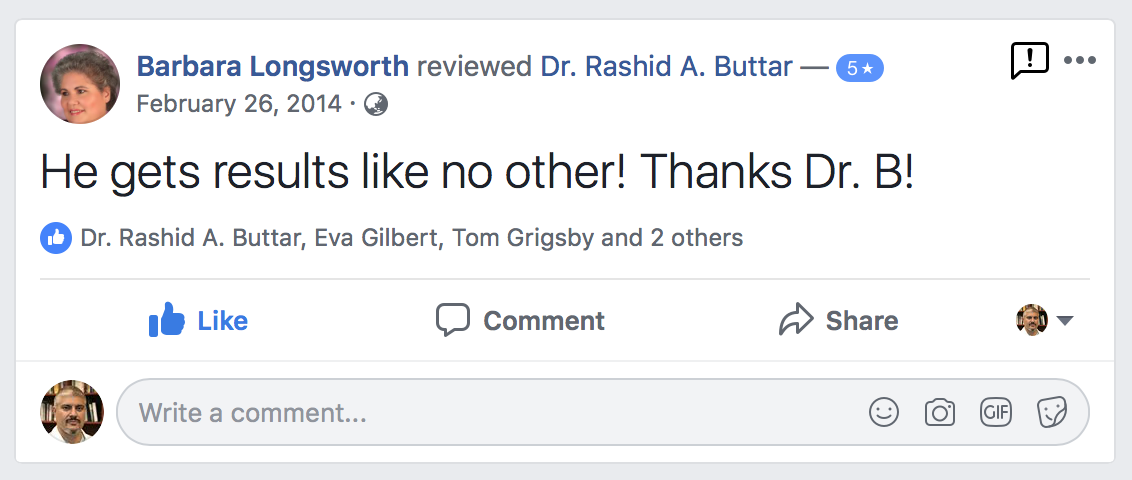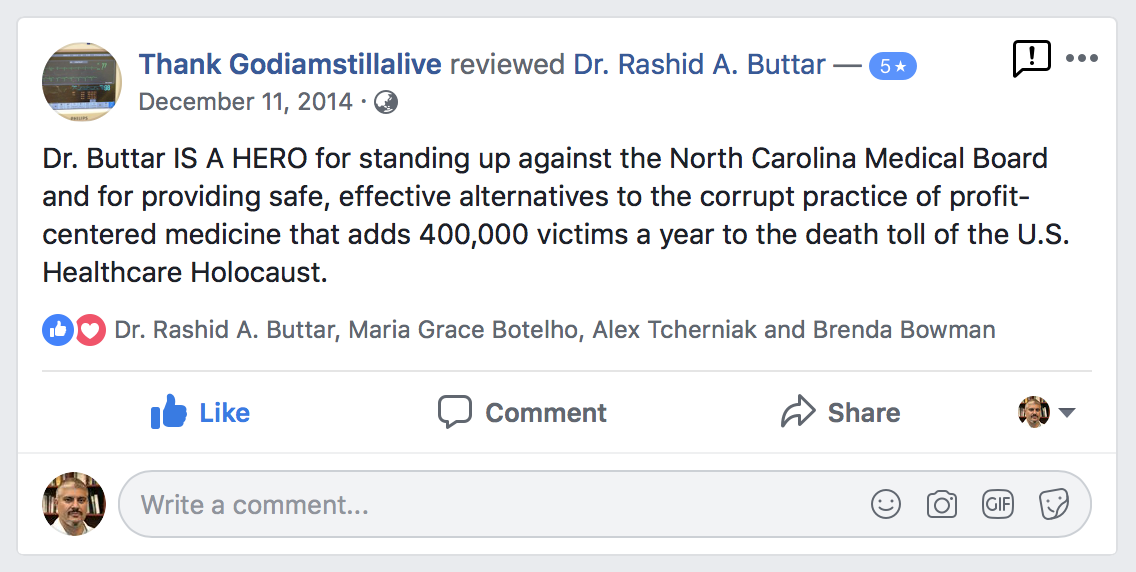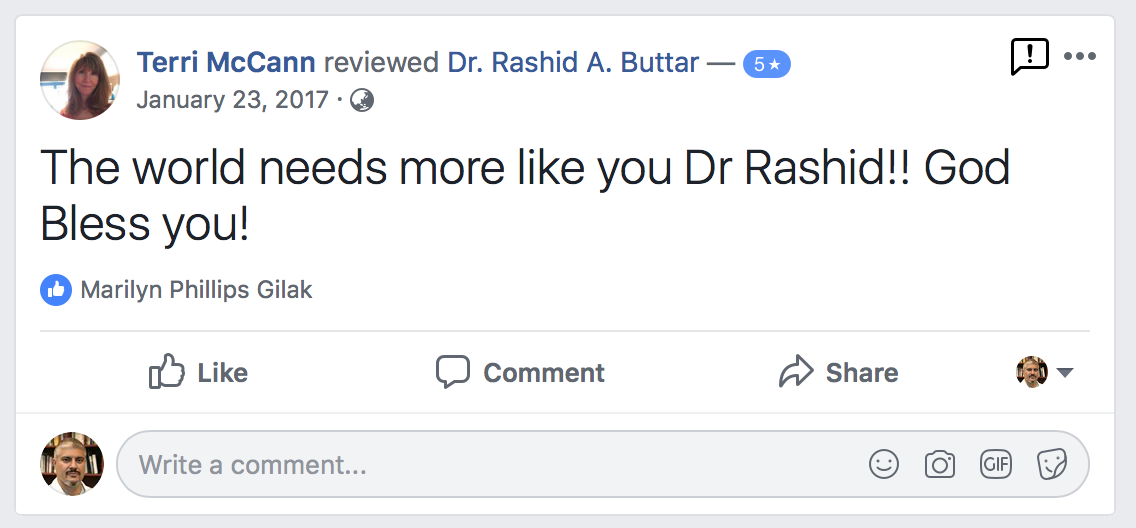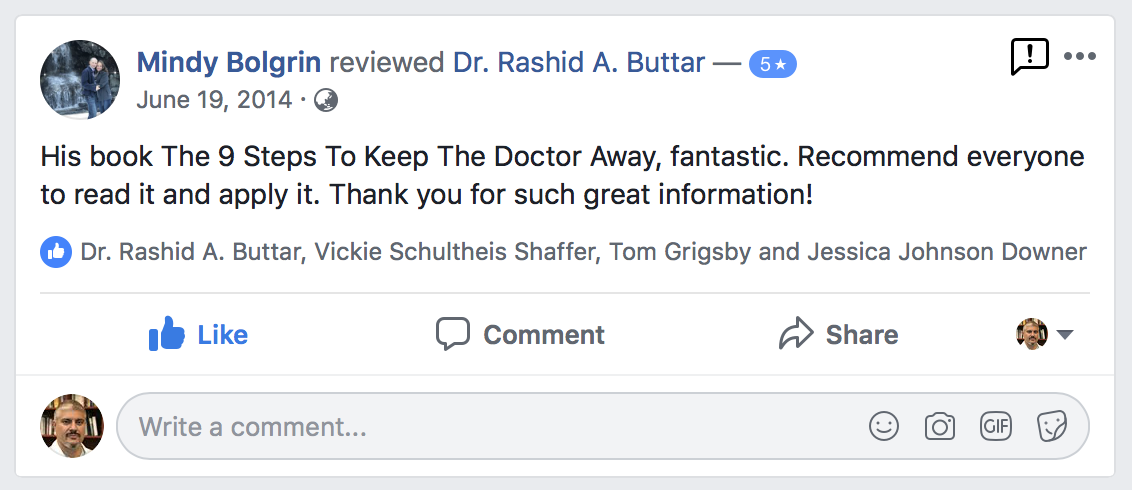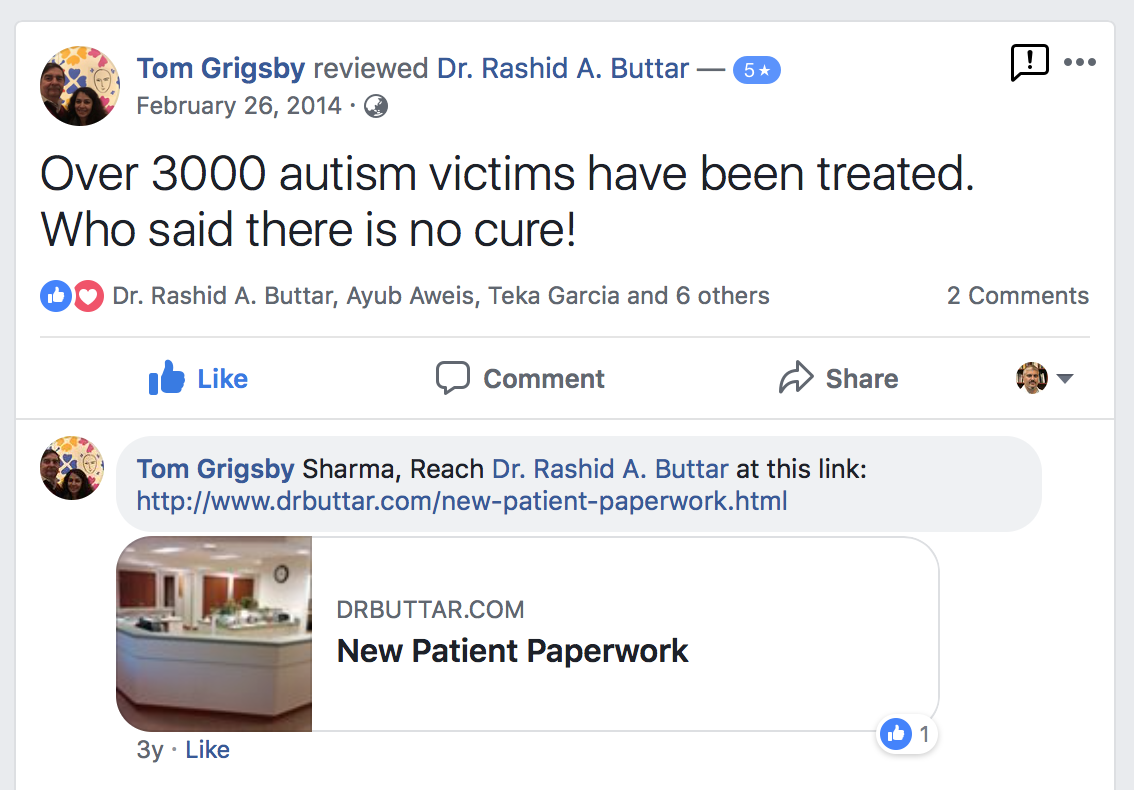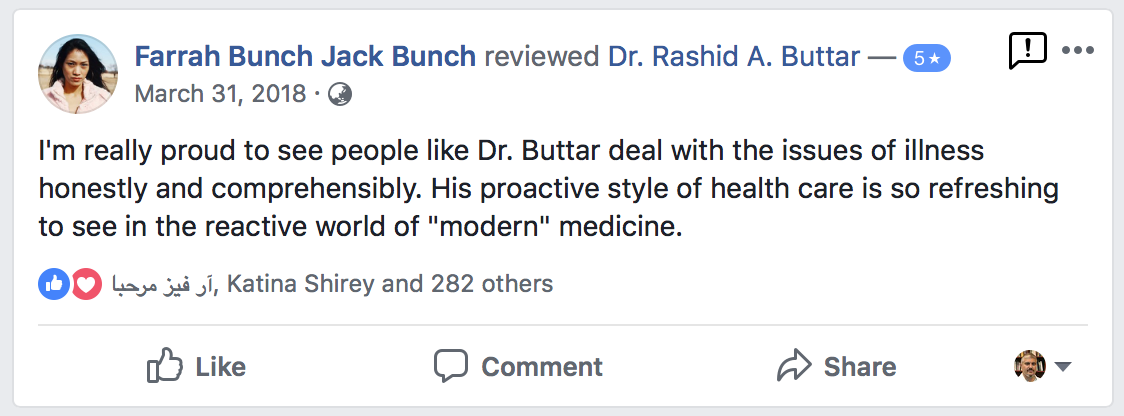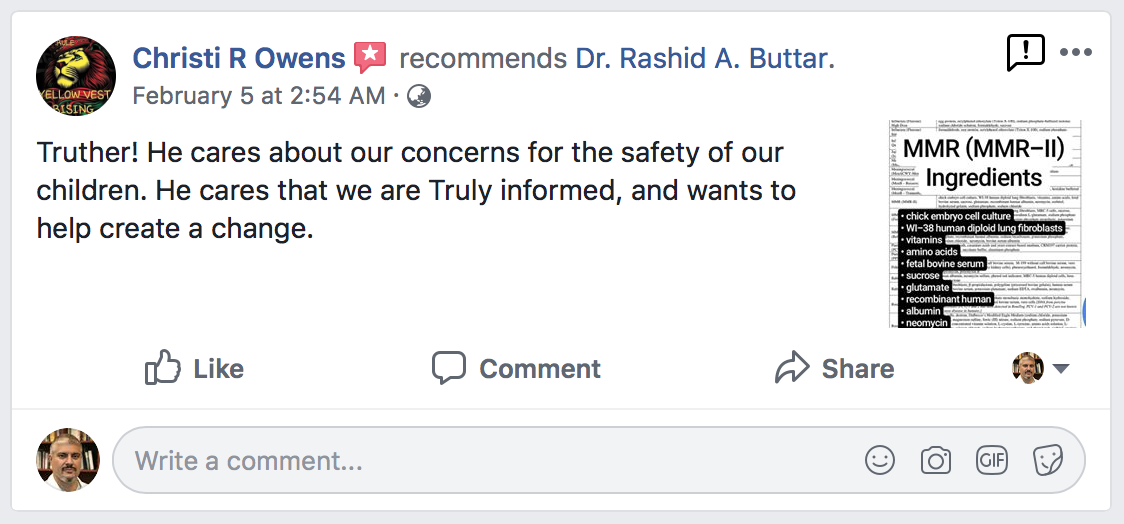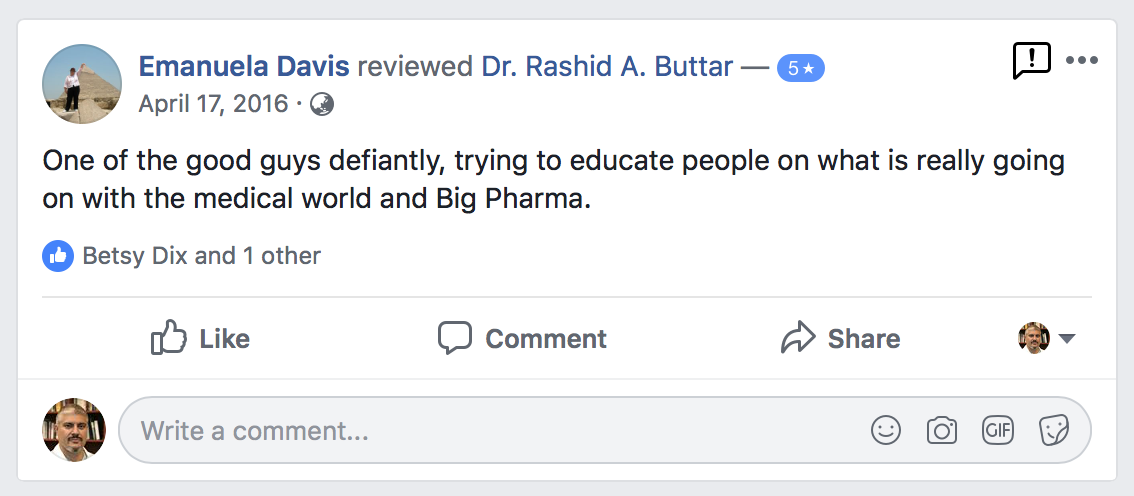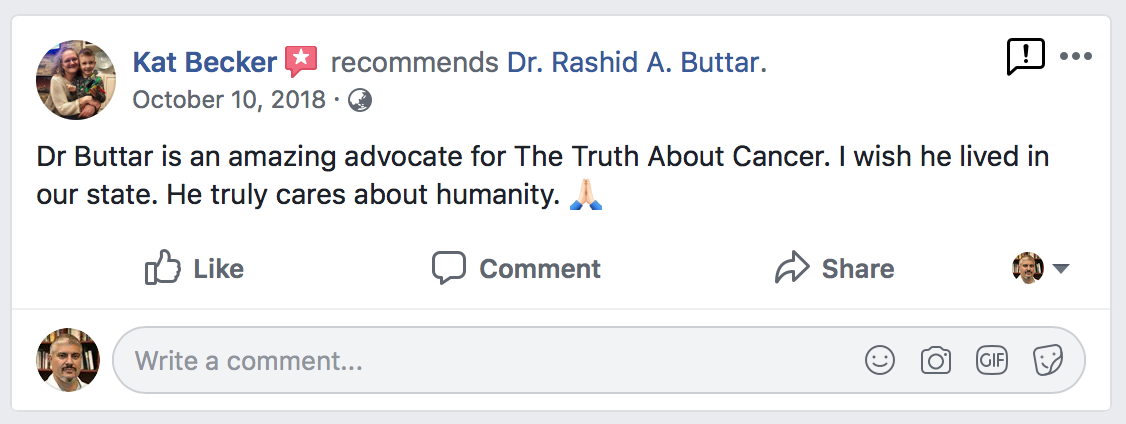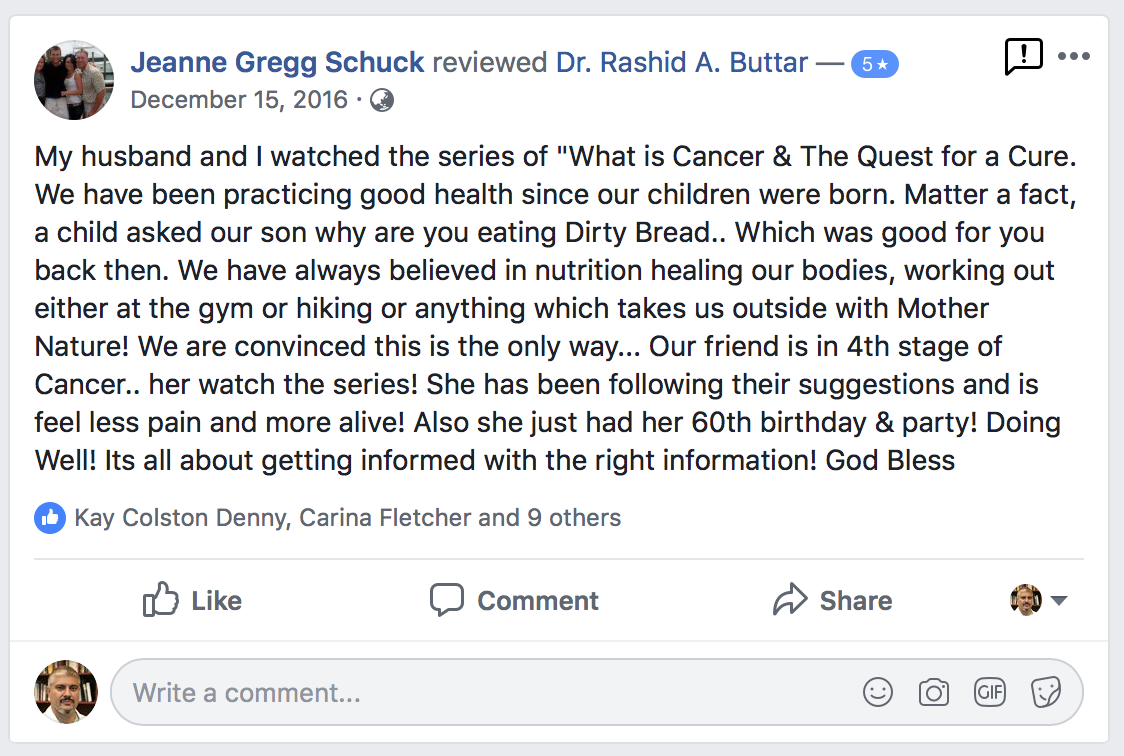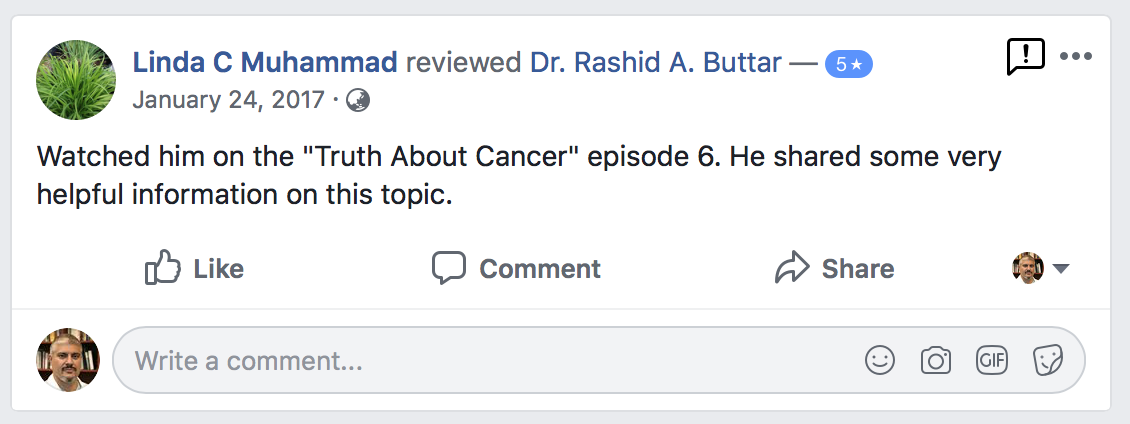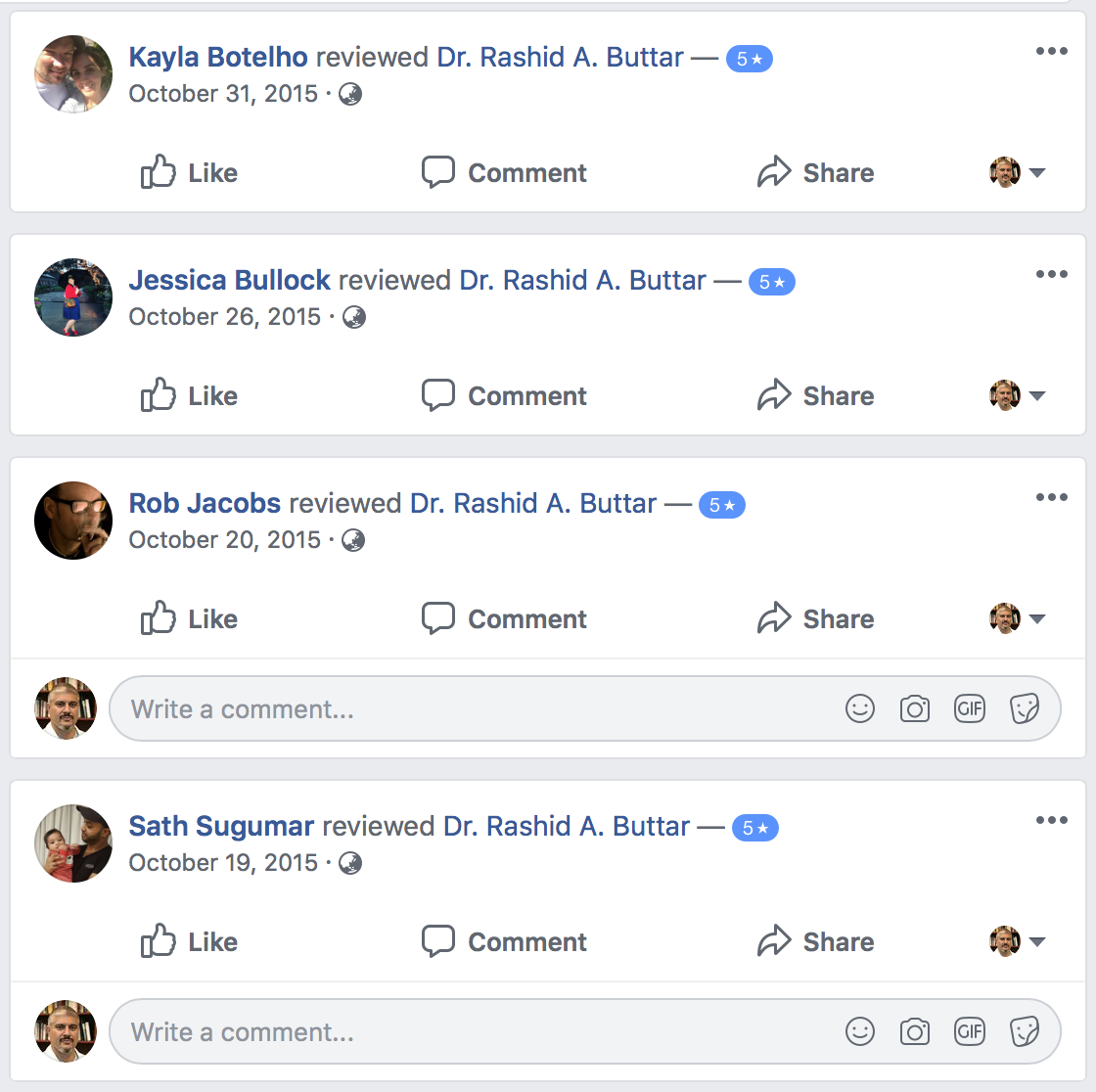
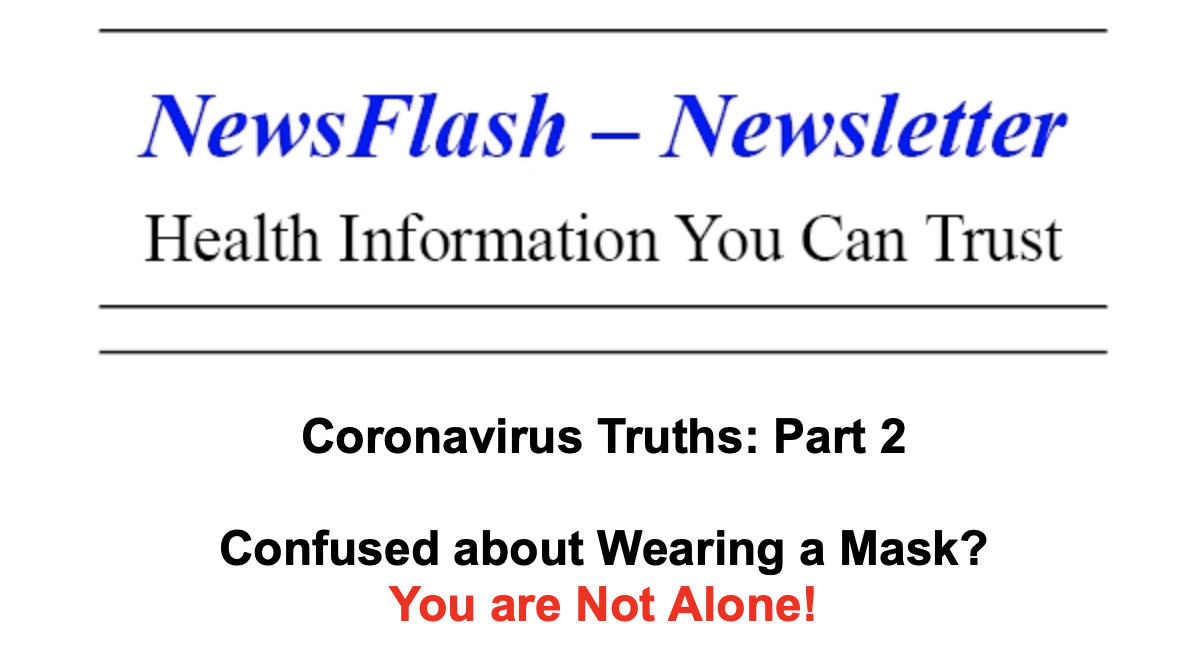
It is no wonder when the news reports conflicting advice from medical experts.
On May 29, 2020 they reported:
“If you do not have any respiratory symptoms such as fever, cough, or runny nose, you do not need to wear a mask,” Dr. April Baller, a WHO public health specialist, says in a video on the site. “Masks should only be used by health care workers, caretakers, or by people who are sick with symptoms of fever and cough.”1
And one week later on June 6, 2020:
World Health Organization Director-General, Dr. Tedros Adhanom Ghebreyesus said: “In areas with widespread transmission, WHO advises medical masks for all people working in clinical areas of a health facility, not only workers dealing with patients with COVID-19. . . . “Second, in areas with community transmission, we advise that people aged 60 years or over, or those with underlying conditions, should wear a medical mask in situations where physical distancing is not possible. Third, WHO has also updated its guidance on the use of masks by the general public in areas with community transmission.” Dr. Tedros also stated: “Masks are not a substitute for physical distancing.”2
We need to look at actual studies that test whether viruses are stopped by masks, and whether wearing them may be more harmful, i.e. more virus particles directed to the brain, not enough oxygen in the body to fight infection.
On April 1, 2020, the Center for Infectious Disease Research and Policy at The University of Minnesota published a commentary in their newsletter titled: “Masks-for-all for COVID-19 Not Based on Sound Data.”3
Now, this scientific reasoning is appearing around the world. From all my research, it is good to see the WHO April 29 recommendation.4
So what is the truth?
The WHO April 29 statement concurs with the conclusions of a 1920 study published in the American Journal of Public Health amid the Spanish flu pandemic by Dr. W.H. Kellogg detailing his investigations into whether masks protect from spreading viruses. The researchers identified that it required multiple, multiple layers to block viruses and that this amount of material prevented the person from obtaining enough oxygen through the mask.
To quote the study: “When a sufficient degree of density in the mask is used to exercise a useful filtering influence, breathing is difficult and leakage takes place around the edge of the mask.” This leakage leaves the mask not more than 50% effective in reducing infection. The article also stated: “Masks have not been demonstrated to have a degree of efficiency that would warrant their compulsory application for the checking of epidemics.”
Their summary stated:
“Masks have not been proved efficient enough to warrant compulsory application for the checking of epidemics, according to Dr. Kellogg, who has conducted a painstaking investigation with gauzes. This investigation scientific in character, omitting no one of the necessary factors. It ought to settle the much argued question of masks for the public.”6
Recently published articles state similar findings: “In conclusion, both surgical and cotton masks seem to be ineffective in preventing the dissemination of SARS–CoV-2 from the coughs of patients with COVID-19 to the environment and external mask surface.”7
A survey of healthcare workers wearing restrictive masks and protective eyewear while working with patients found that 81% of them reported new headaches.8
With airflow blocked enough for restriction of virus movement, it makes sense that headaches happen as there is not enough oxygen getting into the body, and headaches happen in a low oxygen environment such as the headaches people get when they are at high altitudes.
We have found in working with people with EMF symptoms from cell phone use that headaches are a primary complaint. This is due to the red blood cells sticking together, which prevents their ability to supply the necessary oxygen we humans need to function. It makes sense that the restrictive airflow through highly efficient masks would result in reduced oxygen levels that would result in the development of headaches.
Mask pore sizes are larger than the size of viruses.
Pore sizes of masks are many times larger than the size of viruses. Viruses are so tiny, they can easily slip through most any type of mask that is not NK95 rated. The CDC does not recommend that the public wear the smaller pore surgical grade masks, as they are in short supply and need to be reserved for health care workers and first responders.9
The coronavirus is about 0.120 μm (micrometer) in diameter.10
The pore size of masks ranges from 80 to 500 μm, which means that viruses of 0.120 μm can slip through the pores of masks exceptionally easily.
Cloth Masks
Researchers looking at whether masks can block viruses found: “This study showed that the filtering efficiency of cloth face masks were relatively lower, and washing and drying practices deteriorated the efficiency.” . . . “The poor efficiency was due to the presence of larger sized pores. Our study also demonstrated that washing and drying cycle deteriorates the filtering efficiency due to change in pore shape and clearance. We also found that stretching of the CM [cloth masks] surface alters the pore size and potentially decreases the filtering efficiency. The findings of this study suggest that CM are not effective, and that effectiveness deteriorates if used after washing and drying cycles and if used under stretched condition.”11
Other researchers found similar results for cloth masks.
A study in the British Medical Journal found: “Penetration of cloth masks by particles was almost 97% and medical masks 44%.” The study concluded: “This study is the first RCT [Randomized Controlled Trial] of cloth masks, and the results caution against the use of cloth masks. This is an important finding to inform occupational health and safety. Moisture retention, reuse of cloth masks and poor filtration may result in increased risk of infection. Further research is needed to inform the widespread use of cloth masks globally. However, as a precautionary measure, cloth masks should not be recommended for HCWs [Health Care Workers], particularly in high-risk situations, and guidelines need to be updated.”12
- Who Website. Coronavirus disease (COVID-19) advice for the public: When and how to use masks. Retrieved May 29, 2020 from: www.who.int/emergencies/diseases/novel-coronavirus-2019/advice-for-public/when-and-how-to-use-masks
- Fox News Website. Report on face masks’ effectiveness for COVID-19 divides scientists. Retrieved June 3, 2020 from: www.foxnews.com/science/effectiveness-of-face-masks-divides-scientists-in-new-report
- Brosseau L, Sietsema M. COMMENTARY: Masks-for-all for COVID-19 not based on sound data. Center for Infectious Disease Research and Policy. April 1, 2020.
- Who Website. Coronavirus disease (COVID-19) advice for the public: When and how to use masks. Retrieved May 29, 2020 from: www.who.int/emergencies/diseases/novel-coronavirus-2019/advice-for-public/when-and-how-to-use-masks
- Fox News Website. Report on face masks’ effectiveness for COVID-19 divides scientists. Retrieved June 3, 2020 from: www.foxnews.com/science/effectiveness-of-face-masks-divides-scientists-in-new-report
- Kellogg WH, MacMillan G. An experimental study of the efficacy of gauze face masks. Am J Public Health (NY). 1920 Jan; 10(1): 34–42. doi: 10.2105/ajph.10.1.34.
- Bae S, Kim MC, Kim JY, et al. Effectiveness of Surgical and Cotton Masks in Blocking SARS-CoV-2: A Controlled Comparison in 4 Patients. Ann Intern Med. 2020 Apr 6:M20-1342. doi: 10.7326/M20-1342.
- Ong J, Bharatendu C, Goh Y. Headaches Associated with Personal Protective Equipment – A Cross-Sectional Study Among Frontline Healthcare Workers During COVID-19. Headache. 2020 May;60(5):864-877. doi: 10.1111/head.13811.
- CDC Website. Recommendation Regarding the Use of Cloth Face Coverings, Especially in Areas of Significant Community-Based Transmission. Retrieved May 31, 2020 from: www.cdc.gov/coronavirus/2019-ncov/prevent-getting-sick/cloth-face-cover.html
- Viralzone Website. Coronaviridae. Retrieved May, 31, 2020 from: https://viralzone.expasy.org/30?outline=all_by_species
- Neupane BB, Mainali S, Sharma A, Giri B. Optical microscopic study of surface morphology and filtering efficiency of face masks. PeerJ. 2019; 7: e7142. Published online 2019 Jun 26. doi: 10.7717/peerj.7142.
- MacIntyre CR, Seale H, Dung TC, et al. A Cluster Randomized Trial of Cloth Masks Compared with Medical Masks in Healthcare Workers. BMJ Open. 2015 Apr 22;5(4):e006577.doi: 10.1136/bmjopen-2014-006577.
If This Info Was Helpful, Pass It On!
You may find the information below to be helpful.
Social Media Channels listed below have a lot of beneficial information. For cancer and autism info, scroll down.
Join Dr. Buttar On Facebook Live Every Monday at 8:15 pm New York Time
For any non-medical topics, media interviews or speaker inquiries, please send an email to info@DrButtar.com
Once again, thank you for your interest.
“The life you may be saving by adopting these principles might just be your own.”
“As a patient of Dr. Buttar for more than 7 years, I know firsthand the life-changing impact of his work, and I’m proud to call myself one of his many successes. Over the years, he has become so much more than just a doctor; he is a good friend and a trusted advisor, but most importantly, he is someone I have bestowed with the highest possible honor I could give – intrusting him with the care of my family. For the first time ever, Dr. Buttar is sharing his breakthrough findings through 9 Steps to Keep the Doctor Away. This is a truly priceless opportunity – a glimpse inside the genius mind of Dr. Buttar. If you care at all about yourself, your family and your future, make this book, and the concepts included in it, a part of your daily routine. Can’t we all agree that the health and well-being of ourselves and our families should be at the very top of our priorities? Don’t wait for a health crisis in your own life to start preparing. Allow yourself to challenge traditional medical thinking and most importantly, make the most of this precious gift. After all, the life you may be saving by adopting these principles might just be your own.”
—Greg Provenzano, President and Co-Founder of ACN Inc., the World’s Largest Direct Selling Telecommunications Company providing services in 21 different countries.
“I would not be living today if I had not found Dr. Buttar.”
“Anyone who has any concerns about their health needs to read this book. It tells the truth in plain language so you and I can understand it, and does so candidly, without any concern or influence of fear of the FDA, mainstream medicine and big drug companies. I became a patient of Dr. Buttar in March of 2003 after having 4 heart
—- Ned Jarrett, 2 time NASCAR National Champion, inducted into 15 Halls of Fame and the only person in history to retire from NASCAR while still a National Champion.
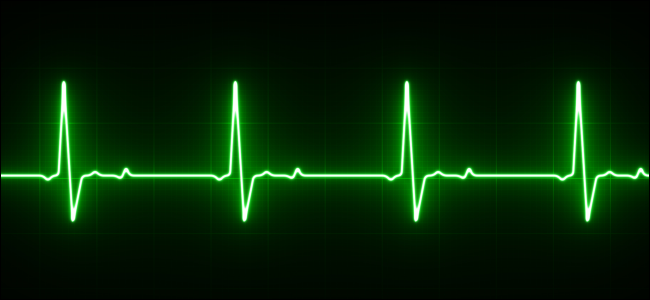
Rashid A. Buttar, DO, FAAPM, FACAM, FAAIM
Biographical Information
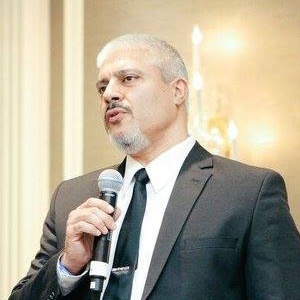 Dr. Rashid A. Buttar became an Eagle Scout at the age of 14, becoming the youngest person in the US to get his Eagle in 1980. Dr. Buttar graduated from high school at age 17 and received his undergraduate degree from Washington University in St. Louis. While at Washington University, Dr. Buttar was on a full academic ROTC scholarship and played football as linebacker and defensive-end for the WashU Bears. After graduating with a double major in Biology and Theology at age 21, Dr. Buttar attended medical school at the University of Osteopathic Medicine and Health Sciences, College of Osteopathic Medicine and Surgery in Des Moines, Iowa, graduating with his medical degree at age 25.
Dr. Rashid A. Buttar became an Eagle Scout at the age of 14, becoming the youngest person in the US to get his Eagle in 1980. Dr. Buttar graduated from high school at age 17 and received his undergraduate degree from Washington University in St. Louis. While at Washington University, Dr. Buttar was on a full academic ROTC scholarship and played football as linebacker and defensive-end for the WashU Bears. After graduating with a double major in Biology and Theology at age 21, Dr. Buttar attended medical school at the University of Osteopathic Medicine and Health Sciences, College of Osteopathic Medicine and Surgery in Des Moines, Iowa, graduating with his medical degree at age 25.
Dr. Buttar did a rotational internship with an emphasis in General Surgery in Houston, Texas and then later trained in General Surgery at Brooke Army Medical Center in San Antonio, Texas. While serving in the US Army, Dr. Buttar also served as Brigade Surgeon for 2ndInfantry Division, Republic of South Korea, and later as Chief of the Department of Emergency Medicine at Moncrief Army Community Hospital at Ft. Jackson in Columbia, South Carolina while serving in the US Army.
Dr. Buttar made the list for promotion to Major in the US Army at the age of 28, becoming the youngest person to make the list for the rank of Major that year in the US Army just prior to finishing his service in the Armed Forces. During his military career, Dr. Buttar had the privilege of serving with and/or being attached to the 2ndInfantry Division, the 101stAir Assault Division and the 5thSpecial Forces Group.
Dr. Buttar is board certified and a Diplomate in Clinical Metal Toxicology and Preventive Medicine, is board eligible in Emergency Medicine and has achieved fellowship status in three separate medical organizations (Fellow of the American College for Advancement in Medicine, Fellow of the American Academy of Preventive Medicine, and Fellow of the American Association of Integrative Medicine).
Dr. Buttar now serves as the Medical Director for the Centers for Advanced Medicine. The Centers are located in NC, TX, and CA, specializing in the treatment and needs of patients refractory to conventional treatments who have failed the standard approach to their disease process. With a special emphasis on the interrelationship between environmental toxicity and the insidious disease processes and the “dis-regulation” of the immune system, Dr. Buttar and the Centers have attracted patients from over 90 different countries suffering from autism, cancer, heart disease, stroke and many other conditions too numerous to list.
Dr. Buttar previously served as Director of Clinical Research and Development for V-SAB Medical Laboratories where he was extensively involved in research with polypeptide and peptide analog sequencing and identification technologies as well as innovative methodologies for drug delivery mechanisms. In addition, Dr. Buttar was heavily involved in clinical outcome-based research and response based studies with various groups including personal interest, private BioTech companies, university-based projects, and government-sponsored clinical research.
Dr. Buttar has lectured worldwide on these subjects at scientific congresses and professional symposiums and has been frequently invited to present at medical conferences. He has appeared and been featured in local, national and international media including newspapers, radio, and TV. He has been interviewed by or written about in numerous news journals including the Wall Street Journal, US News and World Report, TIME Magazine, Boston Globe and the New York Times. Dr. Buttar has been invited to and testified in front of the North Carolina Legislature as well as the United States Congress, giving special testimony before the Congressional Sub-committee on Human Rights and Wellness. Phillips Publishing, Health Directions Inc., and Stephen Sinatra, MD have either listed or cited Dr. Buttar as being among the “Top 50 Doctors in the United States”.
Dr. Buttar served as Educational Chair for the American Board of Clinical Metal Toxicology (ABCMT) for 3 years and was in charge of the national training program that leads to Board Certification in Clinical Metal Toxicology. Dr. Buttar then became the Vice Chairman and eventually was elected as Chairman of the ABCMT and served in those capacities for over 6 years. Dr. Buttar was also a member of the 12 member National Metals Task Force, appointed to address the endemic nature of metal toxicity and the resulting implications on world health during the administration of President George W. Bush.
Dr. Buttar also served as President of the North Carolina Integrative Medical Society for 6 years and also headed up 2 other medical societies in the past as President including the Advanced Medical Education and Services Physician Association and Center for Advanced Medicine Physician Associates. He has served on numerous boards as well as CME committees for a number of medical organizations and societies including the American Association for Health Freedom, Age Management Medical Group, International College of Integrative Medicine and American College for Advancement in Medicine.
Dr. Buttar also served in the past as Visiting Scientist as well as Nutritional Scientist at North Carolina State University and actively taught for well over 20 years as faculty for mainstream medical courses such as Advanced Trauma Life Support (ATLS) courses for physicians through the American College of Surgeons as well as the Advanced Cardiac Life Support courses for physicians, nurses and emergency response personnel. In addition, Dr. Buttar served as faculty for the Pediatric Advanced Life Support courses for over 15 years.
Dr. Buttar’s first book, “The 9 Steps to Keep the Doctor Away” released in 2010 became a Wall Street Journal, USA Today and Amazon.com best seller and has since, become an international
